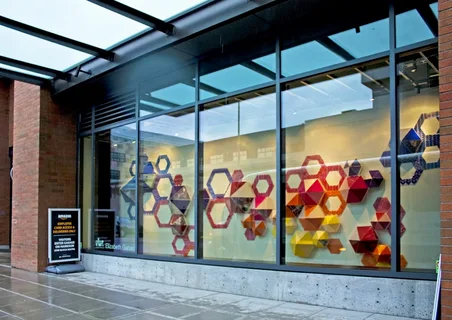The storefront window advertising goes far beyond simply putting products on display–this is an art form, a combination of psychology, design, and marketing strategy to make an attraction that is impossible to resist. Consider: What is the first thing you notice when you are walking in the street? That naughty, catchy display in a window. But why? What makes a window display capture you and others not? The psychology of window advertising is a big part of dealing with the attention and walking the passers by in the store front window into a possible customer.
Visual appeal is one of the largest psychological triggers in action. It is natural that humans are attracted to the aesthetically pleasing. A properly designed window display also uses colors, form, and light to awaken interest. As an illustration, it is noted that bright colors like red or yellow tend to produce a sense of excitement or urgency. It is entering a room with energy–there is no way to overlook it. In the meantime, softer colors such as pastels would tend to convey an impression of calmness and tranquility. The trick is to create a balance between the visual elements so that they fit the message of the brand without forgetting the target audience.
One more significant psychological reason is the law of scarcity. The perception makes the mind view things as being more advantageous when they are presented in a manner that implies scarcity. As examples, advertising a product with a limited-time offer sign or looking at a handful of products to imply exclusivity can give people the sense that they should strike. It exploits the ancient fear of missing out (FOMO) which is strong in motivating action. This urgency will elicit a reaction in the brain that would prompt impulse buying or attract customers who would have otherwise been lost to pass by.
The importance of storytelling also cannot be underestimated. Each window display is a story. Not merely displaying products, but triggering an experience. Think of a case where a fashion shop is installing a winter collection, but the models are dressed as though they are on a holiday in a snow-covered mountain. It is not just a shirt and a pair of boots on display but a call to enter a world. This exploits the need of the consumer to have something more than the ordinary. The story telling in the storefront window advertising does not need to be fancy. Even the minor hints, a clever positioning of the products or a welcoming motif, can evoke feelings and evoke imagination.
Another psychological factor that affects decisions is Social Proof. As we observe the other individuals using a product or place, the more we are likely to believe that it is something worth trying. To drive this point home, storefront windows usually feature reviews, customer testimonials, or pictures of happy customers. When there is a bustling and vivid scene on a window display, it sends an unconscious message to people, telling them, This is the place to be. It is as though walking by a full restaurant. Assuming it’s all full now, you will doubtless want to know what all the shouting is about.
Placement and accessibility is one of the elements that have been ignored in window advertising. When a storefront is in high foot-traffic, it is essential to make sure the display angle and height are taken into account. A beautiful display could end up being wasted when it cannot be viewed well at some points of view. There has to be a window display that is visible at a distance to attract the attention of the crowd and prompt them to come closer. This is where it is important to know the movement patterns of your audience. Do you want to focus on those who pass in a hurry or do you aim at people who pass slowly? Human movement psychology is an essential part of the process of making sure that your window display is working.
It is worth remembering that in many cases less is more. Every day the human mind is bombarded with stimuli. A window display that is overloaded with too many pieces can be suffocating to potential customers and this can cause them to turn and walk away instead of looking at the pieces. Minimalist designs have been found to hold more attention and particularly where a focal point that makes the point home is used. Like offering a puzzle–when everything is happening to it, you cannot make out the picture. However, when you have the right degree of simplicity and focus, your message can be easily understood and effective.
Another layer of psychology that is finding strength is interactivity in modern storefront advertising. Individuals desire to be included. The gap between the offline and online activities can be reduced by incorporating such elements as QR codes that result in exclusive offers or social media challenges to participate in. It provides the potential customers with a reason to pause and engage with the display and transform passive observers into active participants. This brings an additional level of emotional attachment to the brand and creates a feeling of community about the store.

